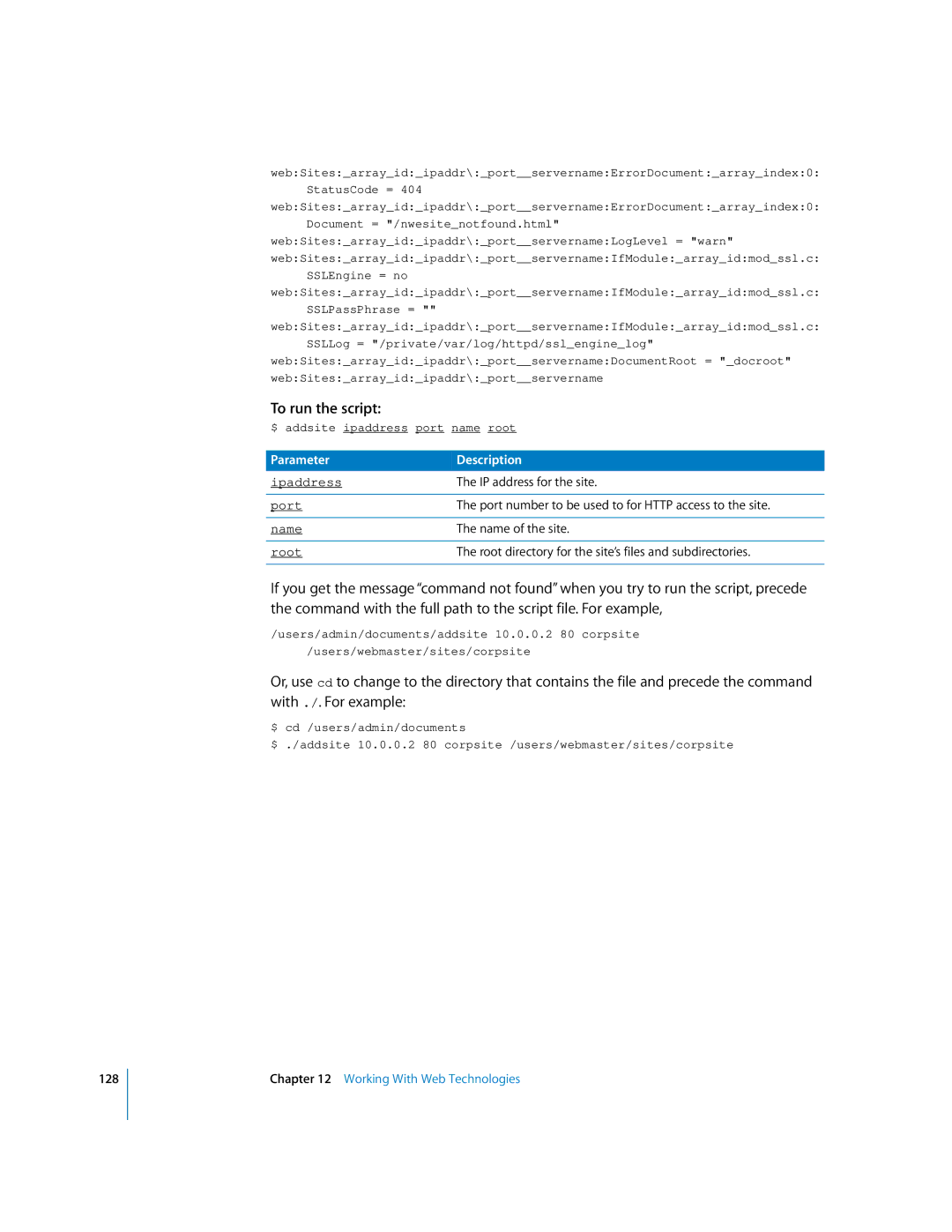
web:Sites:_array_id:_ipaddr\:_port__servername:ErrorDocument:_array_index:0: StatusCode = 404
web:Sites:_array_id:_ipaddr\:_port__servername:ErrorDocument:_array_index:0: Document = "/nwesite_notfound.html"
web:Sites:_array_id:_ipaddr\:_port__servername:LogLevel = "warn"
web:Sites:_array_id:_ipaddr\:_port__servername:IfModule:_array_id:mod_ssl.c: SSLEngine = no
web:Sites:_array_id:_ipaddr\:_port__servername:IfModule:_array_id:mod_ssl.c: SSLPassPhrase = ""
web:Sites:_array_id:_ipaddr\:_port__servername:IfModule:_array_id:mod_ssl.c: SSLLog = "/private/var/log/httpd/ssl_engine_log"
web:Sites:_array_id:_ipaddr\:_port__servername:DocumentRoot = "_docroot"
web:Sites:_array_id:_ipaddr\:_port__servername
To run the script:
$ addsite ipaddress port name root
Parameter | Description |
ipaddress | The IP address for the site. |
|
|
port | The port number to be used to for HTTP access to the site. |
|
|
name | The name of the site. |
|
|
root | The root directory for the site’s files and subdirectories. |
|
|
If you get the message “command not found” when you try to run the script, precede the command with the full path to the script file. For example,
/users/admin/documents/addsite 10.0.0.2 80 corpsite
/users/webmaster/sites/corpsite
Or, use cd to change to the directory that contains the file and precede the command with ./. For example:
$ cd /users/admin/documents
$ ./addsite 10.0.0.2 80 corpsite /users/webmaster/sites/corpsite
128
Chapter 12 Working With Web Technologies
